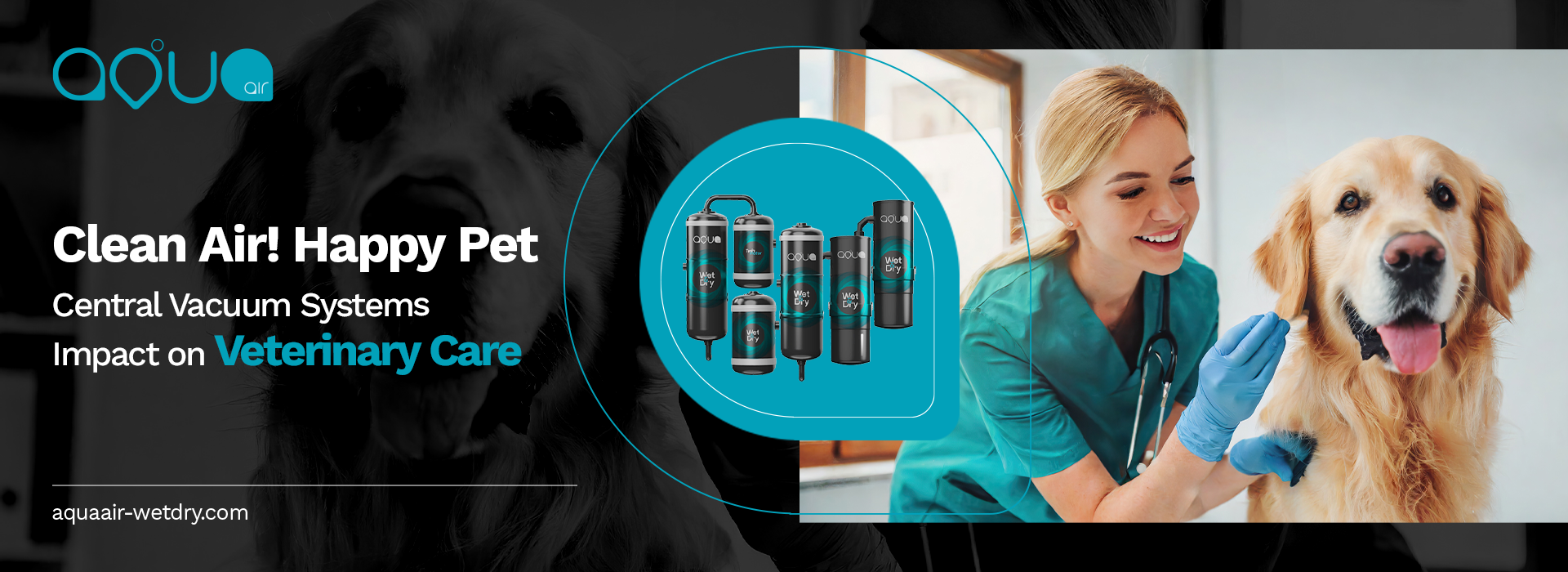
Introduction
Pets are beloved members of countless families around the world, bringing joy, companionship, and sometimes even therapeutic benefits. However, with the joy they bring, pets also bring shed fur, dander, and other allergens that can compromise the air quality in veterinary clinics. Maintaining a clean and healthy environment is crucial for both the patients and the staff. One solution that is increasingly gaining popularity in vet clinics is the use of central vacuum systems.
Read on to know how Central Vacuum Systems improve pet wellness in veterinary clinics, exploring their benefits, mechanisms, and real-world applications.
Understanding Central Vacuum Systems
Central Vacuum Systems are an advanced form of vacuuming technology commonly used in commercial and residential settings. Unlike traditional portable vacuum cleaners, central vacuum systems are stationary units installed within a building. They consist of a central power unit, typically located in a utility room or basement, connected to a network of tubing that runs throughout the building. This tubing is discreetly installed within walls, ceilings, or crawl spaces, with vacuum inlets strategically placed at various locations for easy access.
The Benefits of Central Vacuum Systems in Veterinary Clinics
- Improved Air Quality: One of the primary benefits of central vacuum systems in vet clinics is their ability to significantly improve indoor air quality. Pet dander, fur, and other allergens are efficiently captured and removed from the air, reducing the risk of respiratory issues for both pets and humans. This is particularly beneficial for animals with pre-existing respiratory conditions or allergies.
- Enhanced Cleaning Efficiency: Central vacuum systems offer superior cleaning efficiency compared to traditional vacuum cleaners. Their powerful suction capabilities ensure thorough removal of pet hair and debris from floors, carpets, and upholstery. This not only creates a cleaner and more hygienic environment but also helps to prevent the spread of pathogens and contaminants.
- Reduced Noise and Stress: Veterinary hygiene can be stressful environments for pets, especially those already anxious or in discomfort. Traditional vacuum cleaners are often noisy and can exacerbate stress levels in animals. In contrast, central vacuum systems are typically quieter, minimizing disturbances and helping to create a calmer atmosphere conducive to healing and recovery.
- Convenience and Versatility: With strategically placed vacuum inlets throughout the clinic, central vacuum systems offer unparalleled convenience and versatility. Cleaning staff can easily access vacuum ports from multiple locations, eliminating the need to lug heavy equipment from room to room. This streamlines the cleaning process and allows for more efficient use of time and resources.
- Long-Term Cost Savings: While the initial installation cost of a central vacuum system may be higher than that of traditional vacuum cleaners, the long-term cost savings can be substantial. Central vacuum systems are built to last and require minimal maintenance compared to portable units. Additionally, their superior cleaning capabilities can help to prolong the lifespan of carpets, upholstery, and other furnishings, reducing the need for frequent replacement.
- Health and Safety Compliance: Maintaining a clean and hygienic environment is not only essential for the well-being of pets but also a regulatory requirement for veterinary clinics. Central vacuum systems help clinics meet health and safety standards by effectively removing pet hair, dander, and other contaminants that can harbor bacteria and allergens. This can contribute to improved patient outcomes and client satisfaction.
Real-World Applications
Central Vacuum Systems have been successfully implemented in veterinary clinics of all sizes, from small private practices to large specialty hospitals. Their versatility and efficiency make them suitable for a wide range of applications, including:
- Exam Rooms and Treatment Areas: Central vacuum systems are used to clean exam rooms, treatment areas, and surgical suites, ensuring a clean and sterile environment for medical procedures and patient care.
- Kennels and Boarding Facilities: Pet boarding facilities and kennels often experience high levels of pet hair and dander accumulation. Central vacuum systems help to keep these areas clean and odor-free, promoting a healthy and comfortable environment for boarded animals.
- Grooming Stations: Veterinary clinics that offer grooming services can benefit from central vacuum systems to efficiently remove pet hair and debris from grooming tables, floors, and equipment. This enhances the grooming experience for both pets and groomers.
- Waiting Areas and Reception Spaces: Central vacuum systems are also used to maintain cleanliness in waiting areas and reception spaces, where pet owners and their companions spend time before appointments. A clean and inviting animal health care can help to create a positive first impression and enhance the overall client experience.
Conclusion
Central vacuum systems offer numerous benefits for veterinary clinics seeking to improve pet wellness and maintain a clean and hygienic environment. From enhanced air quality and cleaning efficiency to reduced stress levels and long-term cost savings, the advantages of central vacuum systems are clear. As the importance of environmental health and safety in veterinary medicine continues to gain recognition, central vacuum systems are poised to play an increasingly vital role in promoting the well-being of both pets and their caregivers. By investing in this advanced cleaning technology, veterinary clinics can demonstrate their commitment to providing the highest standards of care for their furry patients.

